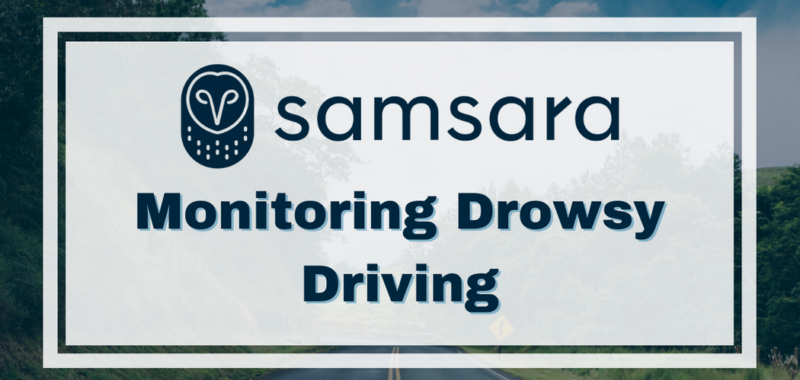
While AI and machine learning advancements have made proactive alerts possible, drowsiness remains an incredibly nuanced behavior that AI models need training to detect.
Samsara Inc., the creator of the Connected Operations cloud, launched its Drowsiness Detection feature into general availability for customers globally.
Drowsiness Detection uses Samsara’s AI models â trained on its large-scale dataset â to proactively detect when signs of drowsiness occur. Then, it triggers real-time in-cab audio alerts for drivers while notifying managers via text or email to triage fatigue-related events as they happen.
These insights can be viewed as aggregated reports within the Samsara Platform, allowing managers to analyze fatigue patterns across their fleet, focus on driver coaching, and ultimately reduce drowsy driving to improve road safety.
Understanding Drowsiness and Road Safety
The National Safety Council reports that drivers are three times more likely to be in a crash if they are fatigued, and according to the AAA Foundation for Traffic Safety, more than 17% of all fatal crashes involve a drowsy driver.
Given long hours and unpredictable road conditions, drivers are even more at risk in the commercial trucking industry. While AI and machine learning advancements have made proactive alerts possible, drowsiness remains an incredibly nuanced behavior that AI models need training to detect.
“It’s hard to detect when someone is truly drowsy. It’s more than a single behavior, like yawning or having your eyes closed. Drowsiness can be less common than other risky driving behaviors, so accurate detection is only as good as the data that feeds and trains AI models,” Evan Welbourne, VP of AI and Data at Samsara, said.
“That’s where the scale of Samsara’s data sets our solution apart. We train our models on more than 38 billion minutes of video footage within our platform to provide high accuracy and impact for our customers,” he continued.
To ensure accuracy, Samsara’s Drowsiness Detection is trained to consider several behaviors that indicate fatigue, which aligns with leading and clinically validated standards for defining drowsiness. These behaviors include head nodding, slouching, prolonged eye closure, yawning, rubbing eyes, and more.
Yawning alone is often not a sufficient detector of drowsiness. An analysis among early adopters of Samsara’s Drowsiness Detection found that approximately 77% of drowsy driving events were detected by behaviors other than yawning alone. The study compiled data on over 35,000 detections across 50 customers since July 2024
Impact of Drowsiness Detection Technology
Samsara first announced Drowsiness Detection at its annual Beyond conference in June 2024, which gathered more than 2,000 operations leaders across the industry. Since then, customers have already experienced a meaningful impact.
For example, one of the largest oilfield services companies in the U.S. has seen a significant decrease in how often drivers fall asleep during shifts since using Samsara’s Drowsiness Detection. According to their VP of Health Safety and Environment, “We used to have multiple drivers falling asleep at the wheel. Now, we’ve gone as long as 30 days without a single driver falling asleep due to these alerts.”
Samsara’s petabyte-scale dataset collects more than 10 trillion data points each year, which is used to train AI models that automate workflows, accelerate time to value, and provide personalized, actionable insights for customers. In one year alone, Samsara’s Video-Based Safety solutions have helped prevent more than 200,000 crashes among customers worldwide.

